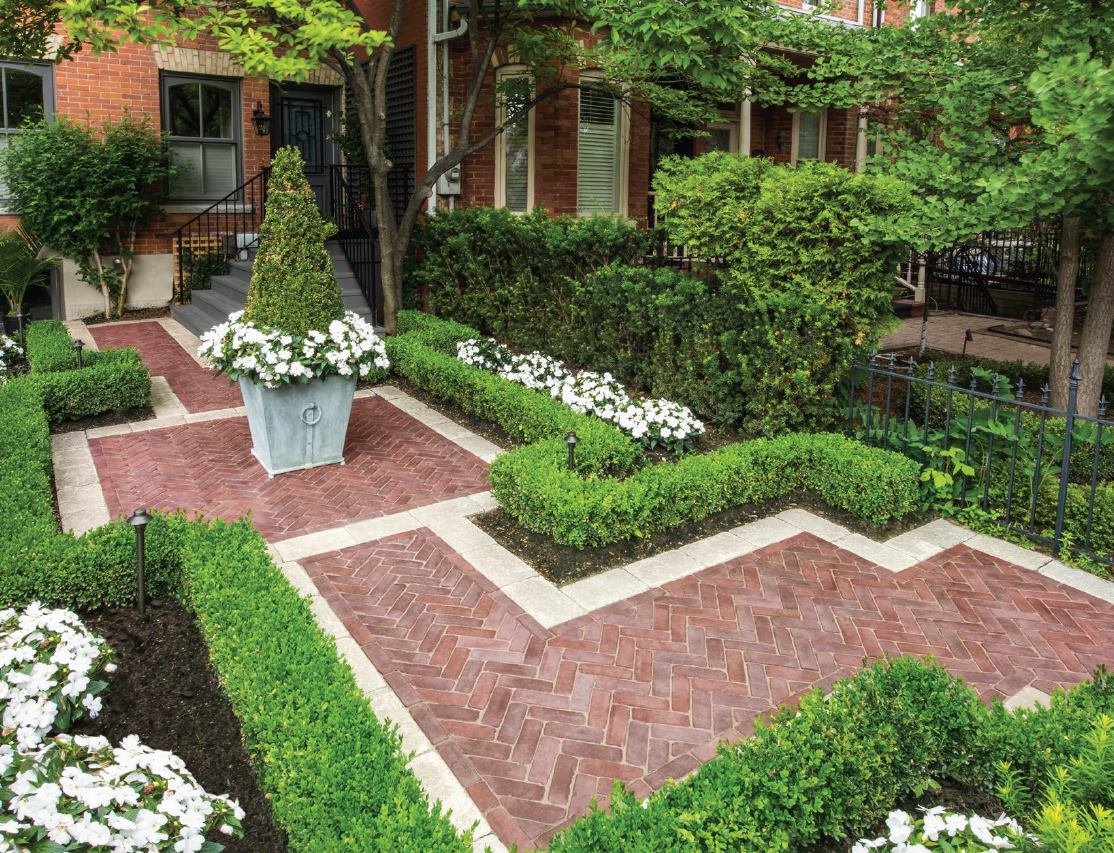
Gator Studio Blog
Expert Knowledge at Your Fingertips
Filter by category here.
What type of hardscape grid is best for pavers and walls?
In this post, we’re taking a look at the features and benefits of the Alliance Gator GG 30-30 Grid. This product can be used to stabilize stairs, walls, and raised patios. It has the added benefit of no memory, which means it lays flat and stays flat. Let’s explore some other highlights.
Breaking Down A Polymeric Sand Job
Paver joint sand technology has come a long way. Did you know that installing Alliance’s G2 polymeric sand can be done in as little as four simple steps? In this post, we’re going to break down a poly sand job and show you how quickly and easily it can be done.
How To Remove Organic Stains From Pavers
Think about the different cleaners you have stored underneath the kitchen sink to handle all the messes that life throws at you. When it comes to messes on your paver or natural stone patio, the same logic applies because there’s really no such thing as a one-size-fits-all cleaner. In this blog post, we’re focusing on organic stains and our recommended solutions for getting rid of them.
The Most Overlooked Aspect Of A Hardscape Installation
In this post, we’re going to highlight an accessory that receives little attention yet is critical to the success of every hardscape project: EDGING. Learn the importance of using the proper edge restraint, different options for edging, and how your base material will ultimately dictate which of these products to use.
Poly Sand Disasters: A Guide On What NOT To Do
According to our Technical Support Team, the number one mistake made during a G2 Polymeric Sand installation is improper watering. In this post, we’re diving into the topics of overwatering, under-watering, drainage, and other moisture-related failures on job sites. Learn about the most common mistakes we see in the field and how to avoid them.
Swipe Right! What Joint Material Is Your Best Match?
ASTM C144 / C33 sand. Aqua Rock. Joint stabilizing sealers. Polymeric sand. Gator Nitro. Ok, let’s face it … there are a lot of joint material options out there and each one offers a unique set of potential benefits for a hardscape project. In this post, we’re going to outline the factors you should consider when trying to decide which product to use on a job.
4 Key Gator Base Efficiencies That Will Gain You A Whole Workday
In this post, we break down the specific savings you’ll be afforded with Gator Base. Did you know you could save an entire day of labor using Gator Base? Let us explain how! Get ready to become a firm believer in foam base. We’ll give you the complete rundown on how you can increase your profit margin with Gator Base. We’ll also share some valuable tips for expediting each Gator Base installation you do, because time is money.
Pros And Cons Of Hybrid Base
Hybrid installations have quickly gained popularity. While they offer numerous benefits, they don’t fit every job. In this post, we’ll outline the pros and cons of this installation method to shine some light on the best scenarios for using it.
Xtreme Edge Contractor Q&A
Xtreme Edge is Alliance’s concrete structural edge solution for hardscapes. It offers permanent continuous lateral support and can be used on a variety of different applications including: traditional, permeable, Gator Base, and overlays. In this post, we’re going to answer the most commonly asked questions we get from contractors about this product.
10 Things To Know Before Installing Gator Nitro
Gator Nitro is an air-cured resin-based jointing material that can offer a number of benefits to a hardscape installation: it provides top-to-bottom strength within the paver joint, it can be installed rain or shine, and it’s permeable when installed. In this post, we’re going to highlight 10 important things you should know prior to installing Gator Nitro on your project.
Gator Nitro Contractor Q&A
Gator Nitro is not meant to replace polymeric sand. It offers a unique set of benefits, however, that might make it a more suitable choice for particular projects. In this post, we’re going to answer the most commonly asked questions we receive from contractors about this product.
3 Things That Will Cause A Gator Nitro Job To Fail
We learn from our mistakes. However, a mistake on a Gator Nitro job can be quite a headache to fix. In this article, we’re going to share the keys to success when working with Nitro and explain the top 3 things that will cause a job to fail.
Gator Nitro vs. Polyermic Sand: The 5 Main Differences
Gator Nitro is very different from polymeric sand. In this article, we’ll discuss the primary differences between these two joint materials to help you determine which one will be the better choice for your unique application.
How To Install Gator Base
Gator Base is a foam base product that has been engineered and designed to expedite pedestrian paver installations. The panels are lightweight and incredibly easy to move around and work with. In this blog post, we’re going to outline, step-by-step, what a typical Gator Base installation involves.
Why Gator Base Is Not For Every Job
Gator Base is a great fit for a wide variety of hardscape applications. However, it’s not for every job. In this blog post, we’re going to shed some light on when Gator Base will make a good fit and some instances when it won’t.
4 Benefits Of Gator Base Lock-N-Go Technology
Alliance’s Gator Base is the only foam base on the market that offers LOCK-N-GO Technology. In this post, we’ll explain what LOCK-N-GO is and four very important benefits that it provides.
10 Quick Gator Base Facts
Gator Base can help save time, money and labor on many different types of hardscape applications. Manufactured using lightweight high-density polypropylene, five Gator Base panels will cover 28.9 sq. ft., and weighs only 6.6 lbs.! In this post, we’ll share 10 quick facts that you might find interesting about this product.
5 Things To Know About Synthetic Base Paver Installations
The use of synthetic base has become a popular option for paver installations across North America. In today’s post, we’re going to share five things you should know about using synthetic base and some key benefits it lends on a job.
How much polymeric sand is needed to fill a paver joint?
Over- or under-filling paver joints with polymeric sand can lead to project failures. In this blog post, we’ll explain how much sand is needed to sufficiently fill the joints and the steps on how to do it.
The Difference Between Wet Cast And Dry Cast Pavers
There are two main types of concrete pavers: wet cast and dry cast. In this blog post, we’re going to explain what they are and the major differences between them.



















